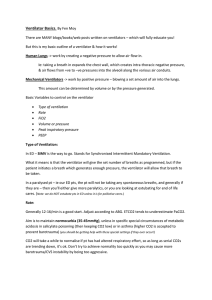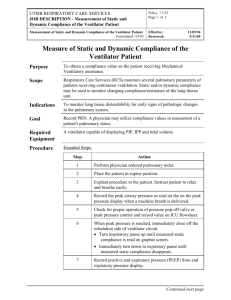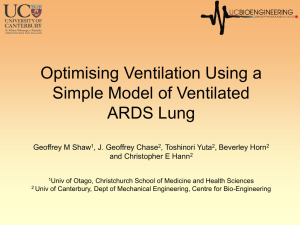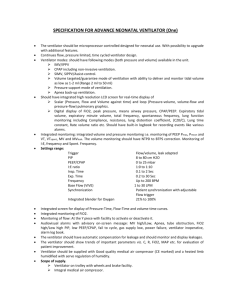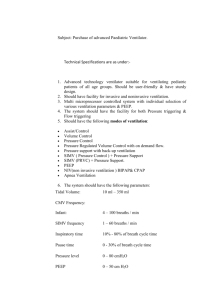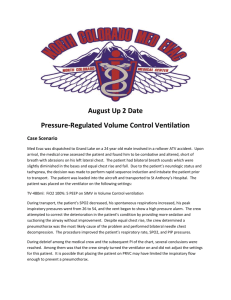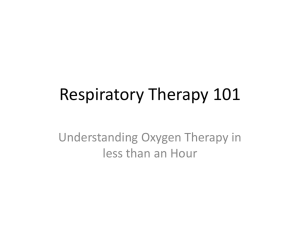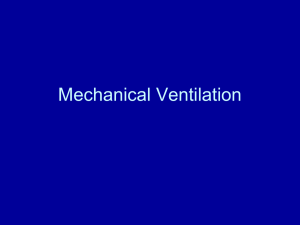using_a_ventilator
advertisement
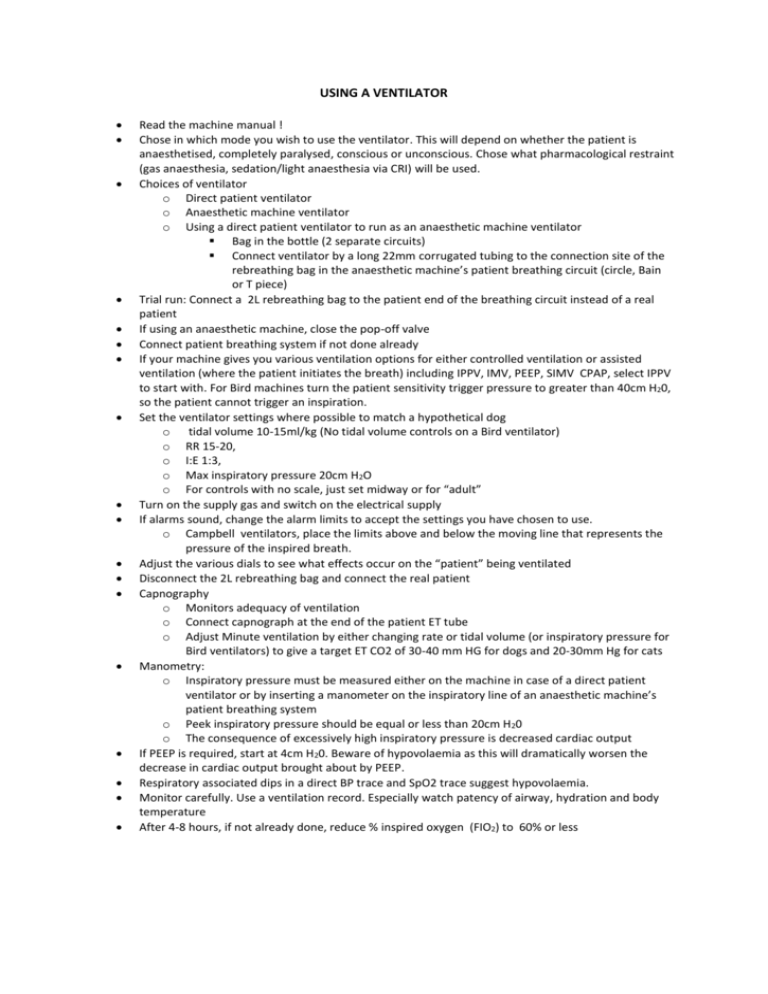
USING A VENTILATOR Read the machine manual ! Chose in which mode you wish to use the ventilator. This will depend on whether the patient is anaesthetised, completely paralysed, conscious or unconscious. Chose what pharmacological restraint (gas anaesthesia, sedation/light anaesthesia via CRI) will be used. Choices of ventilator o Direct patient ventilator o Anaesthetic machine ventilator o Using a direct patient ventilator to run as an anaesthetic machine ventilator Bag in the bottle (2 separate circuits) Connect ventilator by a long 22mm corrugated tubing to the connection site of the rebreathing bag in the anaesthetic machine’s patient breathing circuit (circle, Bain or T piece) Trial run: Connect a 2L rebreathing bag to the patient end of the breathing circuit instead of a real patient If using an anaesthetic machine, close the pop-off valve Connect patient breathing system if not done already If your machine gives you various ventilation options for either controlled ventilation or assisted ventilation (where the patient initiates the breath) including IPPV, IMV, PEEP, SIMV CPAP, select IPPV to start with. For Bird machines turn the patient sensitivity trigger pressure to greater than 40cm H20, so the patient cannot trigger an inspiration. Set the ventilator settings where possible to match a hypothetical dog o tidal volume 10-15ml/kg (No tidal volume controls on a Bird ventilator) o RR 15-20, o I:E 1:3, o Max inspiratory pressure 20cm H2O o For controls with no scale, just set midway or for “adult” Turn on the supply gas and switch on the electrical supply If alarms sound, change the alarm limits to accept the settings you have chosen to use. o Campbell ventilators, place the limits above and below the moving line that represents the pressure of the inspired breath. Adjust the various dials to see what effects occur on the “patient” being ventilated Disconnect the 2L rebreathing bag and connect the real patient Capnography o Monitors adequacy of ventilation o Connect capnograph at the end of the patient ET tube o Adjust Minute ventilation by either changing rate or tidal volume (or inspiratory pressure for Bird ventilators) to give a target ET CO2 of 30-40 mm HG for dogs and 20-30mm Hg for cats Manometry: o Inspiratory pressure must be measured either on the machine in case of a direct patient ventilator or by inserting a manometer on the inspiratory line of an anaesthetic machine’s patient breathing system o Peek inspiratory pressure should be equal or less than 20cm H 20 o The consequence of excessively high inspiratory pressure is decreased cardiac output If PEEP is required, start at 4cm H20. Beware of hypovolaemia as this will dramatically worsen the decrease in cardiac output brought about by PEEP. Respiratory associated dips in a direct BP trace and SpO2 trace suggest hypovolaemia. Monitor carefully. Use a ventilation record. Especially watch patency of airway, hydration and body temperature After 4-8 hours, if not already done, reduce % inspired oxygen (FIO2) to 60% or less
